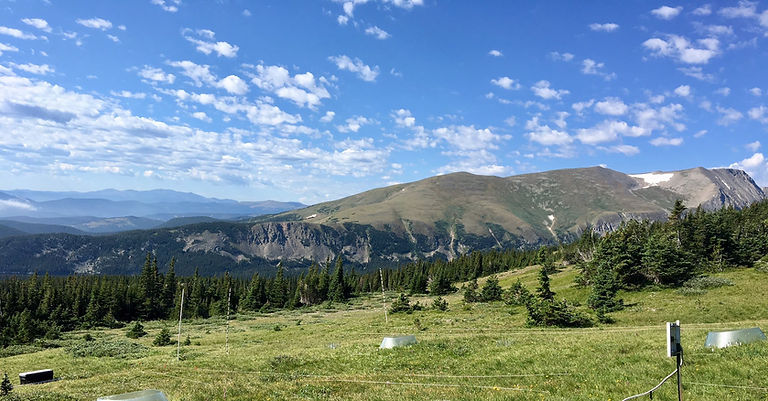
Our Research
Our research combines large-scale observational studies across biogeographic regions, field experiments, functional and phylogenetic approaches, and advanced statistics and modeling to address environmental issues and to explore fundamental questions in ecology. We are broadly focused on two main themes: 1) Community assembly - mechanisms across local, landscape, and biogeographic scales; and 2) Global change biology - applying community assembly theory to environmental issues. We also explore other topics of interest including herbivory, disturbance, and plant hemiparasites
See research highlights from the lab!
Our Projects

01
San Jacinto Forest Dynamics Plot
Forests play key roles in biodiversity maintenance and climate regulation. Globally, forests support over half of all described species and provide many valuable ecosystem functions and services such as timber, clear air, clean water, and carbon storage. However, forests worldwide are being threatened by habitat loss, drought , and changes in fire frequency, which have all resulted in losses to biodiversity and alterations to key ecosystem functions and services. Understanding and predicting how forests will respond to ongoing and pervasive changes to the environment is critical for biodiversity conservation and for the management and maintenance of ecosystem services. Our Forest Dynamics Plot on Mt. San Jacinto in Southern California will be part of the Smithsonian’s Forest Global Earth Observatory network. The overarching goal of this project is to conduct research on forest biodiversity and ecosystem functioning and to establish long-term monitoring of forest health in Southern California.


02
Pinyon Flats rainfall manipulation experiment
We are examining how changes to the amount of rain in different seasons influences plant community dynamics and ecosystem functioning in a Pinyon-Juniper woodland. This system gets both summer and winter rain and our treatments include: Summer only receives ambient summer precipitation and has a roof during winter to exclude all winter rainfall; Winter only receives ambient winter precipitation and has a roof during summer to exclude all summer rainfall; Control receives both ambient summer and ambient winter and has no manipulations; Summer+ receives ambient winter precipitation and has water added during the summer; Winter+ receives ambient summer precipitation and has water added during the winter. The results of the first two years can be found in the link below. We are now collecting the 5th year of data and are running a seedbank study.

As part of the LTER we are examining functional trait and genetic patterns in the Turf Transplant Experiment.
03
Niwot Ridge Long Term Ecological Research

Monitoring wildlife biodiversity and activity across Riverside County
Our goal is to understand the diversity of wildlife in Riverside County. We are using a combination of camera traps and eDNA to better understand where wildlife is, when different animals are active, and how their presence and activity is impacted by humans.
04




